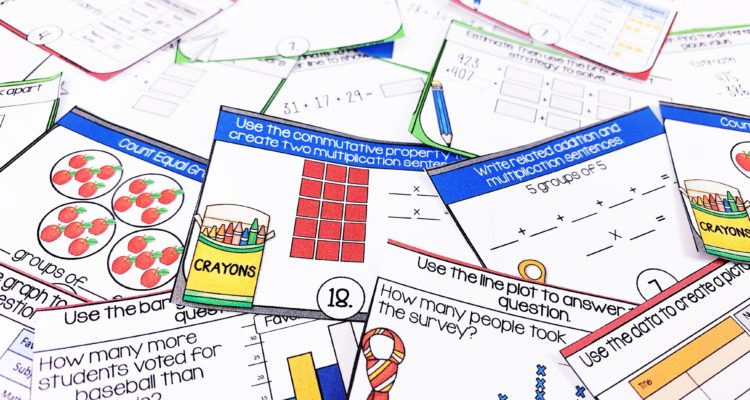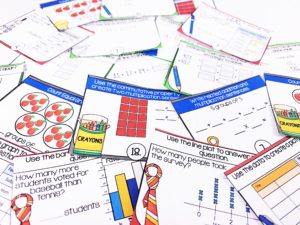
What is the best way to run math stations in your 4th grade classroom? I wish I had a clear or concise answer to this question. Stations should be engaging and challenging, but also quick and easily implemented. This combination is a huge challenge when you are constantly faced with various learning abilities and behaviors in one class, but it can be done. Here are some examples that work for me.
TASK CARDS
I love math task cards. I use them in my small groups as a skill check, in math centers for early finishers, and as a whole group review game. When the task cards are prior skills the students feel confident in using, I feel the completion rate is higher. I also think that storing task cards takes very little space and they are easy to sort and find when a quick activity is needed.

COMPUTER CENTERS
I feel that computer centers are where it’s at for this generation of students. They understand and love computers. The visual and audio aspect of gaming is what most students enjoy in their off time, why wouldn’t they love computer learning games too? Sites like Prodigy Math, Study Island, and XtraMath are favorites among my students. I love that you can track assignments and that levels are automatically adjusted. Another bonus for my inner city students is the ability to have the computer read the questions to my nonreaders.
Many of these math sites offer instant gratification when goals are met. For example, Study Island hands out blue ribbons when levels are achieved, Prodigy allows kids to purchase virtual pets and magical tools to use during math competitions and Xtramath creates printable certificates.
Computer stations also have the longest engagement time for my learners. Like home, they would sit in front of the computer or Xbox all night if I let them.

MATH FACT FLUENCY
Finally, I always offer some sort of math fluency practice. The options are unlimited and can vary in ability levels easily. I use a crate with hanging files to sort out several types of activities. Some of my go-to are multiplication timed tests, Multiplication Squares (free download), flash cards, math skill crafts, and color-coded worksheets. This center can easily be changed out by skill and most activities are easily understood and completed by the students.

THIS IS WHY
For all of the reasons above, you will always find students flipping through task cards, getting excited on math websites, and using crayons to color in fluency activities. Making learning engaging and fun is what makes students get excited when I say it’s time for math class. Give math stations a try in your elementary classroom.







